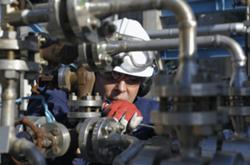Compiled by veteran medical journalist Brian Owens, this roundup of some of the newest science on the COVID-19 pandemic, straight from the scientific journals, is presented by Hakai Magazine in partnership with The Tyee.
Infectiousness peaks before symptoms appear
People who have COVID-19 are most infectious in the days before symptoms appear. A study of throat swabs from 94 patients in China, and 77 pairs of linked cases from around the world, found the highest viral load in swabs just as symptoms appeared. The researchers estimate that infectiousness starts about two-and-a-half days before the symptoms, and peaks less than a day before. Infectiousness then declines quickly over the following week. About 44 per cent of secondary cases were infected before the first case showed symptoms.
Nature Medicine, April 15, 2020
Physical distancing might be needed through 2022
A transmission model of SARS-CoV-2, the virus that causes COVID-19, predicts that recurrent wintertime outbreaks of the disease will probably continue after the current outbreak subsides, requiring prolonged or intermittent physical distancing into 2022. Recently we highlighted a study in Ontario that found similar results.
Physical distancing is economically justified
Physical distancing saves lives, but imposes high economic costs. A cost-benefit analysis in the United States has found that the measures are worth it, and not an overreaction. Assuming physical distancing is adopted widely enough to substantially reduce transmission, the benefits of these policies will outweigh the costs by $5.2-trillion in the U.S., according to economists.
Journal of Benefit-Cost Analysis, April 14, 2020
COVID-19 survivors could face neuropsychiatric problems
Those recovering from COVID-19 infections could be at higher risk of a host of brain diseases and disorders, warn scientists. Survivors of past viral pandemics — the 1918 flu, SARS in 2003 and MERS in 2012 — experienced brain disorders such as encephalopathy, mood changes and psychosis. There is already some evidence that COVID-19 affects the central nervous system, with some of the infected at risk of stroke and sensory loss. The full effects of the disease may not become clear for years.
Brain, Behavior and Immunity, April 13, 2020
Faster tests for COVID-19 are under development
Testing for COVID-19 infections remains one of the biggest bottlenecks in the response to the pandemic. The current standard test can take several hours or even days to give results, so researchers are developing new methods that can work much faster. One test, based on the gene-editing system called CRISPR, can give highly-accurate results in less than 40 minutes. Another uses plasmonic photothermal sensing, which involves hunting for viral RNA using gold nanoparticle probes and a laser, to give accurate results in a matter of minutes. Implementing any new tests would need Health Canada approval.
Nature Biotechnology, April 16, 2020
CT scans should be used sparingly in COVID-19 diagnoses
To help overcome the testing bottleneck, some researchers and doctors have suggested that chest CT scans could accurately diagnose COVID-19. But a review of studies of CT testing found that most had too many limitations to reliably show the scans could replace standard tests. The authors suggest that CT scans should be reserved for evaluating complications of COVID-19.
American Journal of Roentgenology, April 16, 2020
Fighting an overactive immune system
Some of the most severe cases of COVID-19 are caused by the patient’s own immune system overreacting and damaging the lungs in what is known as a “cytokine storm.” Researchers have designed specialized proteins, similar to antibodies, that can soak up those excess cytokines and alleviate symptoms. They are now testing on animals and humans to see if the proteins could be effective against COVID-19.
Another group of researchers suggest that severe COVID-19 may be the result of overactive white blood cells known as neutrophils, which can attack invaders with a sticky web of DNA laced with toxic enzymes called a Neutrophil Extracellular Trap, or NET. These NETs ensnare the pathogen, but also damage the lungs and other organs.
Quarterly Review of Biophysics Discovery, April 9, 2020
Journal of Experimental Medicine, April 16, 2020 ![]()
Read more: Health, Coronavirus, Science + Tech















Tyee Commenting Guidelines
Comments that violate guidelines risk being deleted, and violations may result in a temporary or permanent user ban. Maintain the spirit of good conversation to stay in the discussion.
*Please note The Tyee is not a forum for spreading misinformation about COVID-19, denying its existence or minimizing its risk to public health.
Do:
Do not: